Are you familiar with QR code landing pages? Learn to create, optimize & use QR codes effectively for better engagement and conversion rates.
These specialized web pages, accessible with a simple QR scan, offer a seamless blend of physical and digital interaction, promising to revolutionize how brands connect with their audience.
Let's discover our guide to unlock the secrets of creating engaging, effective QR code landing pages that captivate users and drive conversions.
What is a QR Code Landing Page?
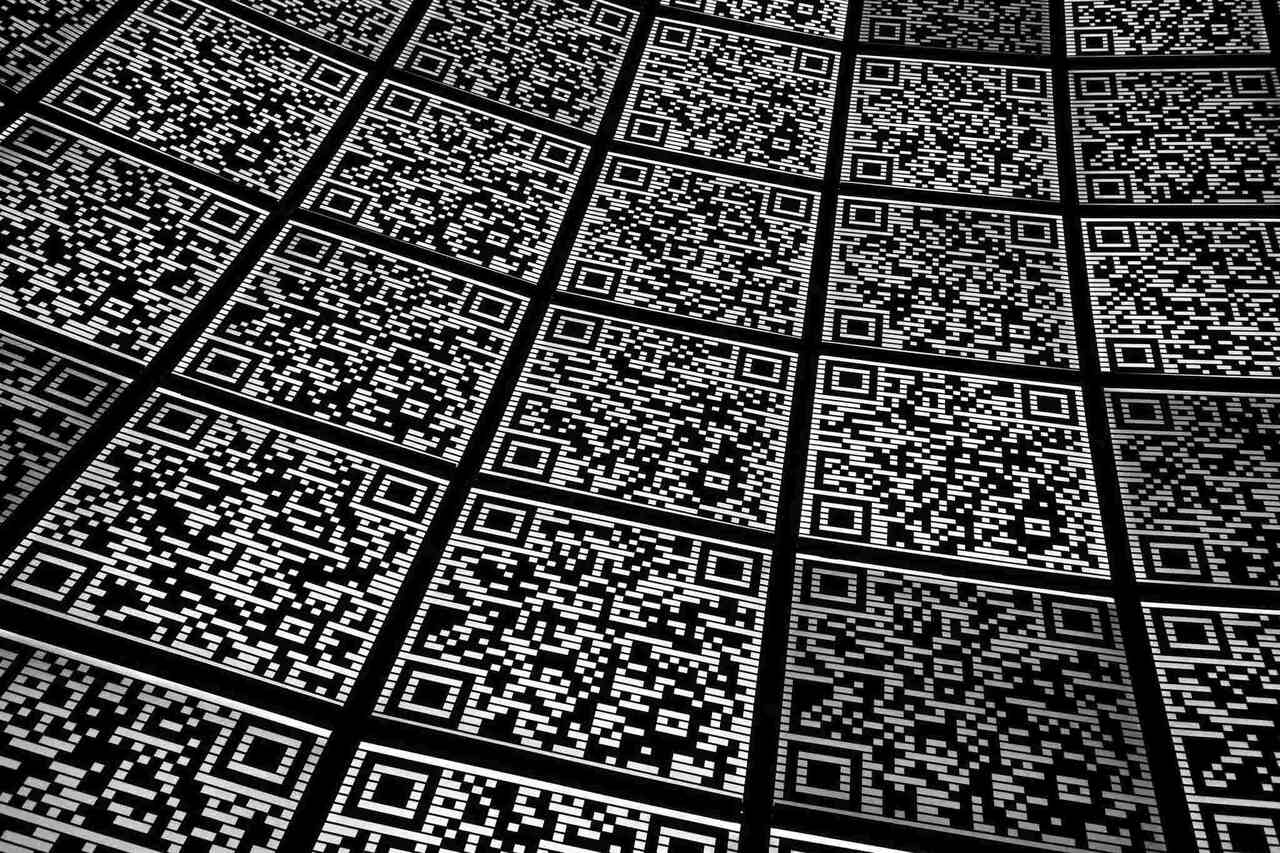
In today's digital age, where convenience and speed are paramount, QR code landing pages stand out as a beacon of innovation in marketing.
But what exactly is a QR code landing page?
At its core, a QR code landing page is much more than just a webpage. It's a specially designed destination on the web that users are directed to after scanning a QR code.
Think of it as a bridge connecting the physical and digital worlds, enabling a seamless transition with just a simple scan. This isn't just any bridge, though; it's one that's paved with the potential for engagement, information, and action.
Unlike traditional web pages, QR code landing pages are crafted with a specific purpose and audience in mind. Instead, they are not generic pages but are tailored to provide a focused and engaging experience for users who have shown interest by scanning the QR code.
How to Create a QR Code Landing Page?
Embarking on the journey to create a QR code landing page is an exciting venture. It's about blending creativity with technology to craft an engaging user experience.
Follow these steps to create a linkpage that looks great and performs well. For this guide, we'll explain how you can create your page using Linkpage Builder of QRCodeDynamic.
Step 1: Build Your Linkpage

Start by creating a centralized page for all your links. Use QRCodeDynamic's linkpage builder tool and select a suitable template such as a review site, business page, social page, or contact page.
Consider your specific business goals or personal needs when choosing the template.
Step 2: Customize Your Linkpage
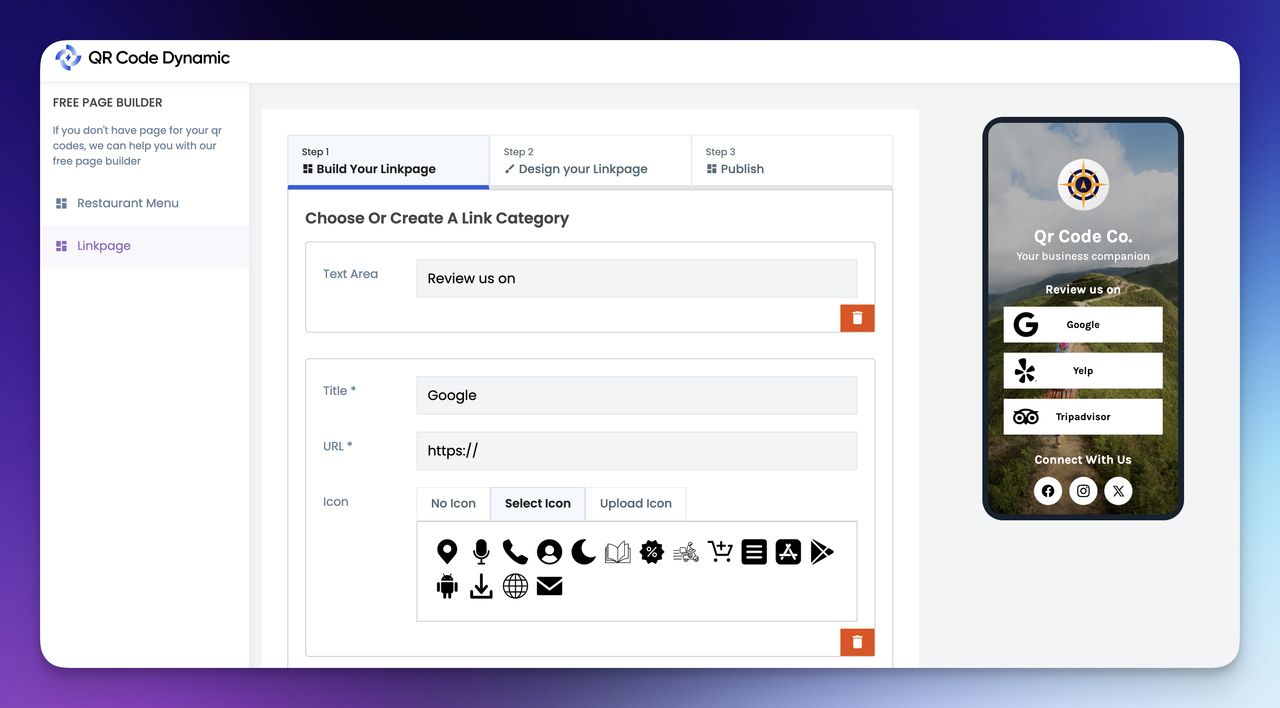
Personalize your linkpage by adding preferred texts, link blocks, icons, and widgets. This step allows you to tailor the content of your linkpage to suit your requirements.
Step 3: Design Your Linkpage
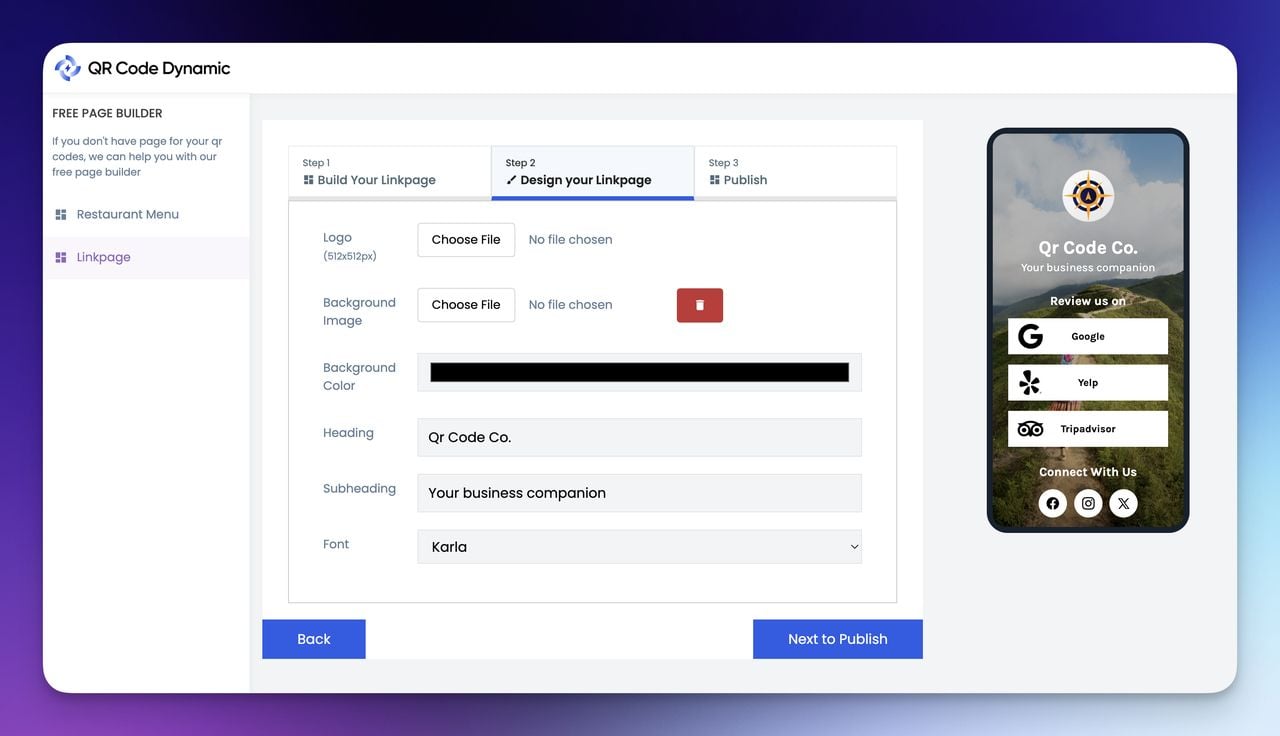
Enhance the visual appeal of your linkpage by tweaking its design elements. Upload your logo, modify the background color, set a background image, and adjust headings and text fonts to make your linkpage more captivating.
Step 4: Generate a Dynamic QR Code
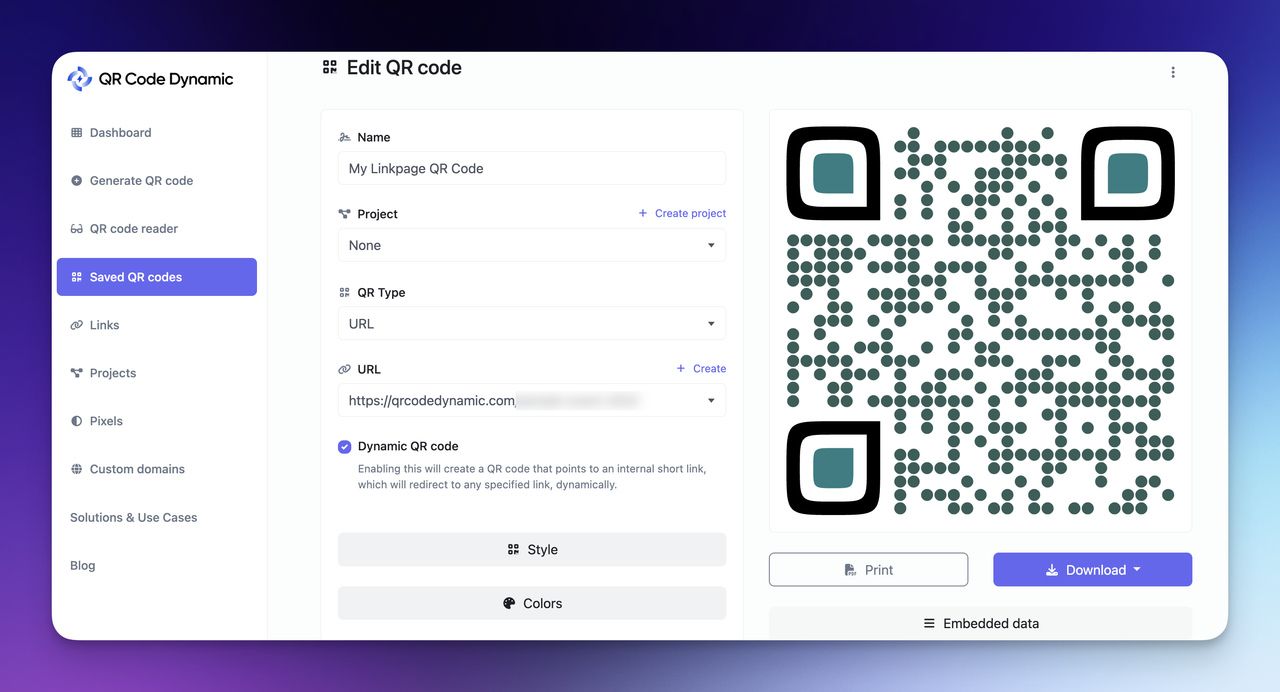
After creating your linkpage, proceed to the URL QR Code Generator. Use this tool to generate a dynamic QR code that links to your linkpage. Customize the QR code according to your preferences, ensuring that the Dynamic QR Code option is selected.
Step 5: Distribute Your QR Code
Congratulations! You've successfully created a dynamic QR code for your linkpage.
Now, you can print or download the QR code for distribution. Display it on walls, include it in emails, showcase it on websites, or use it anywhere you want.
Why QR Code Landing Pages Are Important?

In an era of short attention spans and fierce competition, QR code landing pages offer a unique advantage.
They provide:
- Instant Access: With just a quick scan, users are immediately taken to the landing page, reducing barriers to access.
- High Engagement: Tailored content ensures that users find the information engaging and relevant, increasing the chances of interaction.
- Measurable Results: The ability to track scans and interactions offers valuable insights into user behavior and campaign effectiveness.
- Versatility: Whether it's for a marketing campaign, an event, or customer service, QR code landing pages can be customized to fit a wide range of needs.
- Integration with Broader Marketing Strategies: QR code landing pages are not standalone entities; they are an integral part of broader marketing strategies. They work in harmony with other marketing channels, reinforcing your brand message and amplifying the impact of your campaigns.
- The Power of Personalization: One of the key strengths of QR code landing pages is their ability to be highly personalized. Based on where the QR code is placed and the context in which it is used, the landing page can be customized to reflect the specific interests and needs of the audience.
Benefits of a QR Code Landing Page

QR code landing pages are not just a bridge between the physical and digital realms; they are powerful tools that offer a range of benefits designed to enhance user experience and provide valuable insights to marketers.
Here's why they're becoming an indispensable part of modern marketing strategies:
Editable Even After Distribution
One of the most significant advantages of using QR code landing pages, especially dynamic ones, is their flexibility:
- Flexibility: Change your landing page's content without altering the QR code itself. This means you can update information, promotions, or any part of your landing page in real time without the hassle of redistributing new QR codes.
- Cost-Efficient: Save on printing and distribution costs associated with updating your marketing materials. A single QR code can serve multiple campaigns over its lifetime.
Optimization for Mobile Devices
In a world dominated by smartphones, QR code landing pages are designed to cater to the mobile user:
- Mobile-Friendly Design: Ensure your landing page looks great and functions perfectly on all mobile devices, providing an optimal user experience.
- Quick Access: Users can access your content with a simple scan, making it more likely they'll engage with your content on the go.
Tracking Capabilities for Scans
The ability to track user interaction with your QR code landing page is invaluable for refining your marketing strategies:
- Analytics: Gain insights into how many people are scanning your QR code, when they're doing it, and from where allowing you to measure the effectiveness of your placement and content.
- User Behavior: Understand how users interact with your landing page, including which links they click on and how long they stay, helping you to continually optimize the user experience.
Integration with Various Campaigns

QR code landing pages are incredibly versatile, making them suitable for a wide range of marketing campaigns:
- Multi-use: For product information, event registrations, exclusive deals, or interactive content, QR codes can enhance various marketing initiatives.
- Cross-Media: Easily integrate QR codes into print, outdoor, or digital advertising, creating a cohesive marketing strategy across all channels.
Cost Efficiency and Long-term Viability
Implementing QR code landing pages in your marketing strategy is not only effective but also cost-efficient:
- Low Cost: Creating a QR code landing page is relatively inexpensive, especially when considering the potential return on investment.
- Sustainability: With the ability to update content without reprinting QR codes, you can reduce waste and contribute to more sustainable marketing practices.
No Hosting or Domain Required
One of the beauties of QR code landing pages is their simplicity in deployment. Many QR code generators offer hosted landing pages, meaning:
- Ease of Setup: You don't need to purchase a domain or hosting service; the platform takes care of it.
- Quick Launch: This allows you to get your campaign up and running in no time, focusing more on content and less on technicalities.
Ensuring Data Privacy
In today's digital age, data privacy is paramount. When creating your landing page, consider the following:
- Secure Connections: Ensure your landing page uses HTTPS to protect user data.
- Privacy Policy: Clearly state how you collect, use, and store user data, adhering to GDPR and other privacy regulations.
Improving Conversions with Retargeting
Retargeting is a powerful tool in your marketing arsenal, allowing you to:
- Pixel Integration: Embed retargeting pixels from platforms like Facebook or Google to track visitors to your landing page.
- Tailored Campaigns: Use this data to create targeted ad campaigns for users interested in your content, increasing the likelihood of conversion.
Professional Tools Integration
Enhance the functionality of your QR code landing page by integrating professional tools:
- Analytics: Use tools like Google Analytics to gain insights into user behavior and traffic sources.
- CRM Integration: Connect your landing page with customer relationship management tools to streamline lead capture and follow-up processes.
Effective Use Cases for QR Code Landing Pages

The beauty of QR code landing pages lies in their adaptability. They can be tailored to fit myriad applications, each providing unique value to the business and the consumer.
Here are some compelling ways to integrate QR code landing pages into your marketing and operational strategies:
Products
In the retail and product space, QR code landing pages can serve as digital extensions of your physical products:
- Product Information: Provide detailed product descriptions, specifications, or instructions that might be too lengthy for packaging.
- Customer Reviews: Link to a landing page featuring customer testimonials and ratings to build trust and credibility.
- Exclusive Offers: Encourage purchases by offering special discounts or bundles accessible through the QR code.
Events
For events, QR codes can streamline information dissemination and enhance attendee engagement:
- Event Details: Share schedules, speaker bios, venue maps, or safety protocols.
- Registration and Check-In: Simplify the registration process or use event QR codes for a smooth, contactless check-in experience.
- Live Polls and Feedback: Engage attendees with live interactive content or gather post-event feedback through a dedicated landing page.
Online Menus
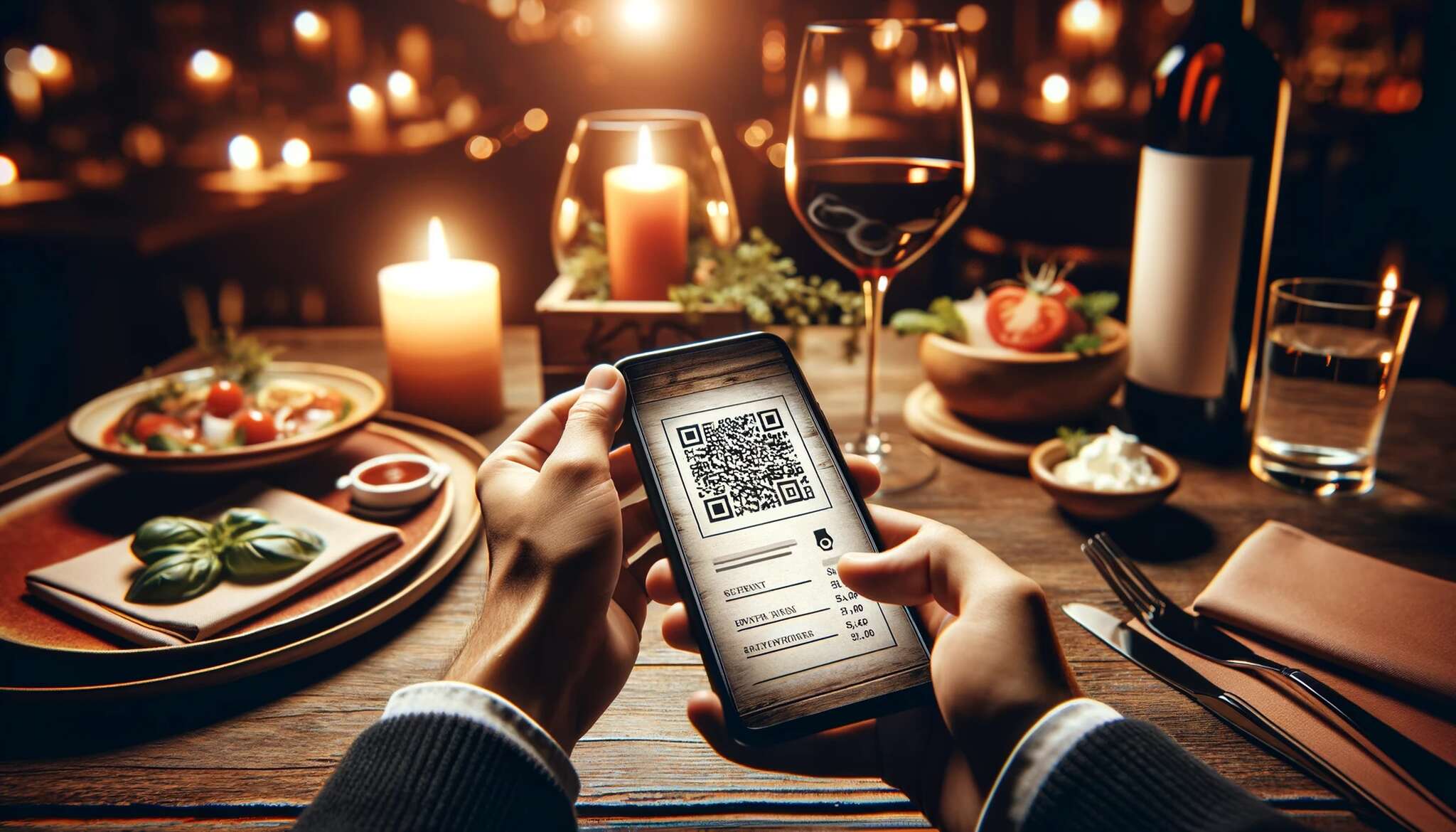
Restaurants and cafes can leverage QR codes for a more dynamic and sanitary menu experience:
- Digital Menus: Replace traditional paper menus with a QR code link to an online menu, making updates easier and reducing paper waste.
- Nutritional Information: Offer detailed ingredient lists and nutritional data for health-conscious diners.
- Ordering and Payment: Integrate ordering and payment functionalities to streamline the dining experience.
Real Estate
In the real estate sector, QR codes can provide prospective buyers with a wealth of information:
- Virtual Tours: Offer an immersive virtual tour of the property directly from "For Sale" signs.
- Detailed Listings: Provide comprehensive property details, including photos, videos, and neighborhood information.
- Contact Information: Make it easy for interested parties to contact the agent or schedule a viewing.
Business Showcases
Businesses can use QR code landing pages to showcase their offerings and company information:
- Portfolio: For creative professionals, a QR code can link to an online portfolio showcasing work samples.
- Company Information: Share your company's story, team bios, and corporate values to build a stronger connection with your audience.
- Services Overview: Detail the range of services you offer, complete with case studies and client testimonials.
10 Tips for Creating an Effective QR Code Landing Page

A well-designed QR code landing page can significantly enhance the user experience and increase engagement. Follow these tips to ensure your landing page stands out and effectively converts visitors into customers or followers.
1. Writing a Compelling CTA
Your call to action (CTA) is the guiding star that leads users towards the desired action. Make it:
- Clear and Concise: Use action-oriented language that leaves no doubt about what you want the user to do.
- Visibly Prominent: Place your CTA in a spot that's easy to find, typically above the fold, and after compelling content persuades users to act.
2. Creating Clear and Transparent Headings
Headings are the road signs that guide users through your content. Ensure they are:
- Descriptive: Clearly describe the section content, making it easier for users to skim through and find what they're looking for.
- Engaging: Spark interest with headings that promise value and encourage further reading.
3. Stylizing your Brand's Copy
Your copy's tone and style should reflect your brand identity, making your landing page an extension of your brand experience:
- Consistent Tone: Maintain a tone that aligns with your overall brand voice, whether it's professional, friendly, or playful.
- Engaging Content: Write content that connects on an emotional level, telling a story that resonates with your audience's desires or challenges.
4. Focusing on High-quality Branding
High-quality visuals and consistent branding elevate the user experience and foster trust:
- Professional Images: Use high-resolution images that reflect the quality of your brand and offerings.
- Brand Consistency: Ensure logos, colors, and fonts are consistent with your other marketing materials for a cohesive brand experience.
5. Including Social Media Links
Integrate social media links to extend the conversation beyond the landing page:
- Visibility: Make your social media icons easily accessible, encouraging users to follow you for updates and community engagement.
- Relevance: Include only those social media channels that are actively maintained and relevant to your audience.
6. Using QR Codes Instead of Forms
Simplify the user journey by using QR codes for actions traditionally done through forms:
- Efficiency: Direct users to pre-filled forms or actions through a simple scan, reducing friction and improving conversion rates.
- Innovation: Stand out by using QR codes in creative ways, such as instant app downloads, email subscriptions, or accessing exclusive content.
7. Tracking Performance
Integrate analytics to understand user behavior and optimize your landing page:
- Insights: Use tools like Google Analytics to track page visits, bounce rates, and conversions.
- Continuous Improvement: Regularly review analytics to identify areas for improvement and test different elements for optimal performance.
8. Optimizing for Desktop and Mobile
Ensure your landing page provides a stellar experience across all devices:
- Responsive Design: Adapt your layout and content to look great and function smoothly on any screen size.
- Speed Optimization: Optimize images and scripts to ensure fast loading times, especially on mobile devices.
9. Keeping Content Short and Engaging
Respect your users' time by providing concise, valuable content that gets straight to the point:
- Brevity: Avoid overwhelming users with too much text; keep paragraphs short and use bullet points for easier consumption.
- Value: Every piece of content should offer value, answering users' questions or solving their problems.
10. Including Engaging Visuals in a Simple Design
A picture is worth a thousand words, and a well-placed visual can dramatically enhance your message:
- Relevant Imagery: Use visuals that complement and reinforce your message, such as infographics, videos, or product images.
- Simplicity: Maintain a clean, uncluttered design that focuses user attention on the most important elements.
Conclusion
Embarking on the journey of creating and utilizing QR code landing pages is a step towards bridging the gap between physical and digital marketing.
With the insights and strategies shared in this guide, you're now equipped to craft engaging, effective landing pages that captivate your audience and drive conversions.
Remember, the key to success lies in understanding your audience, offering value, and optimizing your approach.
Explore our latest blog posts before you go:


